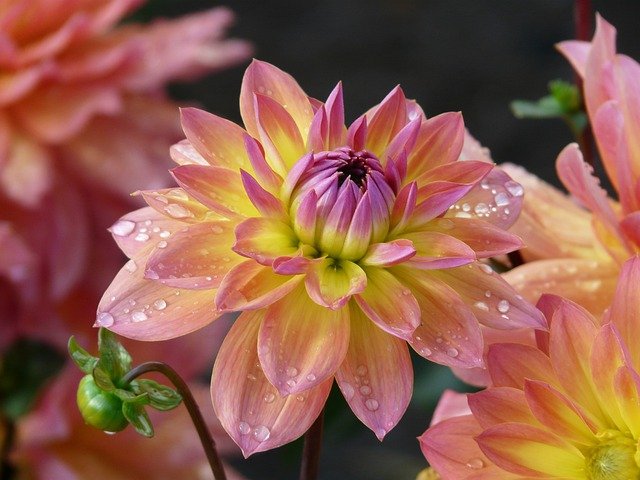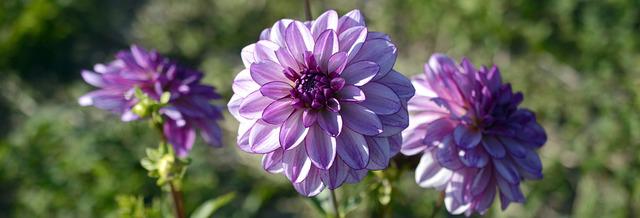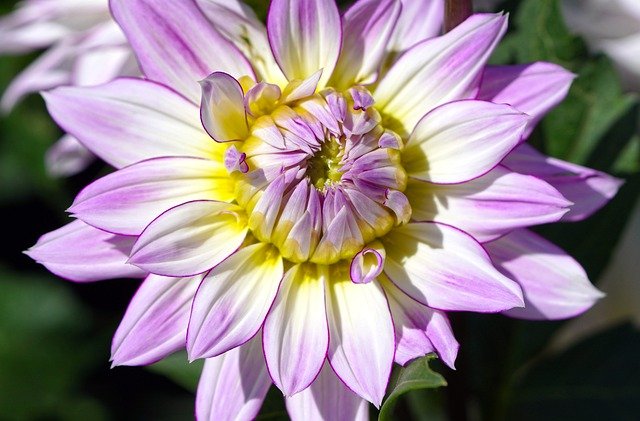Why Dahlia Leaves Turn Yellow: A Guide For Dahlia Enthusiasts

Dahlia leaves turn yellow for a reason! And that reason is the lack of sunlight. Dahlia leaves need sunlight to produce chlorophyll and make their leaves green. If you’re not giving your dahlia enough sunlight, yellow leaves will start to appear. Other factors are disease, insect infestation, bad soil, or unfavorable environmental factors that can all contribute to dahlia plants turning yellow. Investigate the underlying causes of foliar distress in dahlias. In this blog, you’ll learn how to prevent dahlia leaves from turning yellow, what causes dahlia foliage to turn yellow, and what can be done to prevent dahlia leaves from turning yellow. Hopefully, this guide will help you solve the yellowing problem for your dahlias!
Table of Contents
Signs of Yellowing Leaves of Dahlia
It’s not uncommon to see dahlia enthusiasts lamenting yellow leaves on their plants. If you’re one of these people, you’re not alone. Dahlia leaves can turn yellow for various reasons, some of which are easily detectable. This guide will outline the most common symptoms of dahlia canker and how to diagnose and treat the problem. Remember that dahlias are susceptible to a fungal disease called canker, which causes yellow leaves. If you’re noticing any of the following signs, it’s time to take action:
- Sagging petals
- Wilted growth near the roots
- Yellowing of leaves throughout the plant
- Reduced blooms
If you have a dahlia enthusiast, share this guide with them so they can enjoy their plants for years to come!
Reasons Why Dahlia Leaves are Turning Yellow
Aphids
Insect pests that feed on sap, such as aphids, thrips, and spider mites, flourish with the arrival of warmer spring weather and cause havoc among our dahlias every year. Aphids will make your plant appear to be wilting by yellowing its leaves. They will suffocate the plant quickly, multiply like wildfire, and make it more susceptible to mosaic disease.
Thrips
Adult thrips have four long, thin wings about 1/25 of an inch in length. They can be a variety of colors, including pale yellow, black, and brown. Wingless larvae are a common characteristic of this species. Thrips feed on the sap of plants and flowers by rasping at their skin. Thrips feeding is the cause of necrotic spot virus, which manifests as small spots that eventually turn into holes on the leaves. Thrip damage is also indicated by leaves that have a silvery hue.
Spider Mites
Similar to silver mites, spider mites cause discoloration of leaves and can be identified by the fine webs they spin across the plant’s surface. Use your fingers to rub them off if you need to get rid of them quickly. Do it every day until the mess is sorted. You can also spray them with soapy water or diluted neem oil (or any pesticide meant for them). Find praying mantises, ladybugs, and small spiders (but not the harlequin ladybug, which is harmful to the garden) and release them near the affected plants for a long-term environmentally safe solution.
Rot
The stems and tubers rot when dahlias are grown in soggy, poorly-drained soil. In the absence of insects, this is the next most common cause of yellowing leaves, and it is especially common in potted dahlias or after a long period of rainy weather. Verticillium wilt, which affects dahlias, causes the stems to become black, soft, and mushy, and the leaves to brown, wilted, and withered.
Soil Nutrition
They thrive in well-drained, slightly acidic, loamy soil in full sun. To aid this process, wait until they are dormant in winter, top-dress them with garden lime and lots of animal manure, and let the rain soak them in. Dahlias will also turn yellow if they don’t get enough magnesium or iron. Watering with Epsom salts at one teaspoon per 9 liters of water will solve magnesium deficiencies.

Preventing Dahlia Leaves From Turning Yellow
- Dahlia leaves turn yellow for various reasons, but lack of water is the most common. To prevent yellowing leaves, make sure to water your dahlia regularly and mist it with a spray bottle when necessary. To test if your plant needs water, place a piece of paper towel on the soil and wait for a few hours. If the paper towel is wet when you take it off, your dahlia receives enough water. If not, give it a little more love and water it well.
- Avoid low light levels and drafts when possible. Let your dahlia enjoy enough sunlight. However, if it’s already wilting, let them set in a shady area and wait for it to recover.
- Waterlogged dahlia leaves will turn yellow and become floppy if you overwater them. To prevent this, wait until the soil is dry before watering your Dahlias. If you notice that the dahlias are getting waterlogged from a lot of rain or snow, then it’s time to get a bucket and divide up the root zone into several sections so that each section has about an inch of water.
- Remove spent flowers (dead flowers) promptly to prevent fungus infection, which can cause leaves to turn yellow and fall off the plant prematurely.
- If insects are on your plants, spray them with a strong insecticide to get rid of them before they can cause problems such as yellow leaves.

